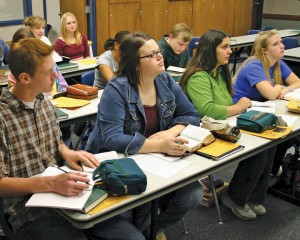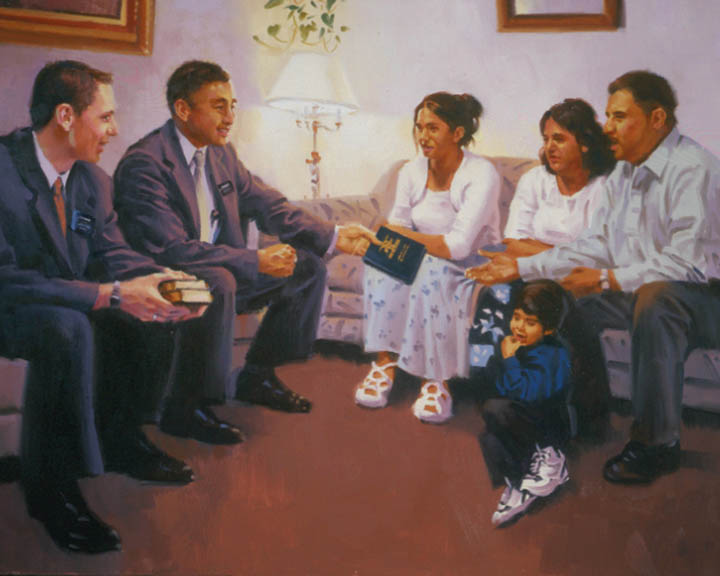 Deseret News has named its best ten articles of 2011 in the category of Excellence in Education. Members of The Church of Jesus Christ of Latter-day Saints (sometimes nicknamed the Mormon Church by friends of other faiths and the press) place a high value on education for both men and women. Here are summaries of the Ten Best of 2011 from Deseret News…
Deseret News has named its best ten articles of 2011 in the category of Excellence in Education. Members of The Church of Jesus Christ of Latter-day Saints (sometimes nicknamed the Mormon Church by friends of other faiths and the press) place a high value on education for both men and women. Here are summaries of the Ten Best of 2011 from Deseret News…
#10 — Pulling the Plug
A perfect storm is brewing that could change higher education in America.
Already cash-strapped colleges are encountering budget cuts at the same time they are seeing record-level enrollments. Tuition costs seem to be going out of control with no end in sight. Students are going into more debt than ever before, and colleges are having to choose what programs to cut and which professors to layoff.
Washington is considering huge cuts in the subsidizing of education, so colleges foresee a necessary hike in already astronomical tuition fees for students. (Read more…)
#9 — Less Stigma over Home Schooling
More Utah families are venturing into home schooling since the stigma surrounding it has lessened.
From 2007 to 2010, the number of home-schooled children nationwide rose by about 25 percent to the current estimate of 2 million. There are a number of reasons why parents are choosing this option, but one of the main reasons for this is because parents are unhappy with the quality of instruction at public schools, according to the National Center for Education Statistics.
Parents choose homeschooling for many reasons. In other states, a common reason is that parents don’t feel the public schools uphold family values, or there is even violence at school. These are not problems in Utah, but some children need more attention, more focused study, a smaller group, and some children have special needs that can be better addressed at home. (Read more…)
#8 — Debate Over Online Learning
The number of college students enrolled in online classes continues to increase. Studying online enables students to work, travel, or pursue other interests, while studying when it’s most convenient. Not everyone is thrilled about the trend, however. Many educators call it an inferior education, many teachers find it to be an inferior teaching experience, and many students worry that their degree will be looked upon as an inferior degree.
BYU-Idaho launched a new online learning program late last month called Pathway, which is geared toward 18- to 30-year-olds who have not earned an associate’s or bachelor’s degree but are interested in doing so. Students are eased into the college experience with a light load of online classes the first year and a weekly study group with the other 15 to 20 students at their location, said Andy Cargal, spokesman for the university. There are currently about 22 sites around the nation where the Pathway Program is offered and two international locations. The university plans to expand the program by about 10 sites each year. (Read more…)
#7 — Where have all the Male Teachers Gone?
In Utah, just 11 percent of elementary teachers are male, according to ’08-’09 data from the state. And the numbers are even bleaker for the earlier grades: Out of the 14 teachers in pre-K in the state in ’08-’09, none were male.
Stereotypes and low salaries are two of the main reasons there are not more men teaching school. Most have to moonlight (find extra employment elsewhere) to support their families in a profession that has long been seen as the domain of women. (Read more…)
#6 — When Mainstreaming isn’t Working
“Tracking” is an educational term in which students are grouped with others who are similar in ability. Thus, gifted children are in one track, and those who struggle are in another track. “The National Education Association, who introduced tracking in the late 1800s, now supports the ending of such grouping.” For one thing, it’s difficult, once a student is labeled, for a student to change tracks. Another situation arises when a student is gifted in one subject, but struggles with another.
However, grouping students of all abilities together in one classroom also creates challenges. The teacher must cope with all the various needs and abilities in one room, and some students feel lost, while others get bored. (Read more…)
#5 — Firing Bad Teachers
Teacher tenure is at the center of debate over improving teaching in America. Tenure is practical immunity from being fired and comes with being a teacher for a certain period of time. This allows bad teachers to stay on when they should be replaced.
…the idea that firing bad teachers will make schools better is catching on. States like Idaho, Tennessee and Florida are all in the process of implementing reforms that would make public school employment contingent on some measure of teacher effectiveness.
On the surface, this looks like a good idea, but who makes the decision as to whether a teacher is effective, and what are the criteria for making that judgment? (Read more…)
#4 — Drowning in Debt
More college students are in debt, and those college students are deeper in debt than ever before.
…two-thirds of students now graduate with some amount of debt, The College Board reported. College students are also taking out more loans than they have in the past — averaging about $24,000 worth of debt at graduation, according to an October 2010 report by The Project on Student Debt.
After graduation, this debt becomes such a burden that the rates of delinquency in repayment and actual default are also increasing, with 37 percent making delinquent payments, and nearly 9% defaulting 2009-2010). (Read more…)
#3 — Why Class Size is Such a Big Deal
Lakeridge Junior High School in Orem, Utah, averages about 36 students per class. Sometimes, there are more. ” The recommended amount of middle schoolers in a science class is 24, according to the National Science Teachers Association. ”
With the economic downturn and cuts looming over state legislatures around the nation, lowering class size may not seem like an option for lawmakers. In fact some states like California and New York are increasing class sizes to cope. Utah’s State Board of Education said it is just trying to maintain class sizes as the number of Utah students in K-12 public education grows by thousands each year. (Read more…)
#2 — Degrees to Nowhere
Not all college degrees are created equal. Earning power after graduation is on the mind of every student, so in many U.S. states, students focus on science and math, when they are more naturally talented in the liberal arts.
“Universities are a place where students should be able to come and have an array of choices,” White said. “One of the best things about American universities is that students can find out about things they didn’t know and major in those things and make a life’s career out of it. If we limit majors to what we think is important, we limit student choices, and education shouldn’t be about limiting it, it should be about expanding opportunities. A student who enjoys what he or she is doing will be a successful.” (Read more…)
#1 — On the Frontier
BYU-Idaho is pushing the boundaries of education.
The rise of BYU-Idaho, detailed in the new book “The Innovative University,” is until now a story that has rarely been told outside of the spartan concrete walls of the Rexburg campus. And yet, it’s a tale that’s gaining traction within the world of higher education and beyond. It is the story of how a small community college became a force in the debate over the future of higher education. Over the last decade, the school has morphed from a two-year junior college into a four-year university with an international reach and an enrollment nearing 24,000. The school’s focus on students and teaching (over faculty and research), a year-round schedule, innovations in online learning (including the use of remote online instructors), and a program for distance education called Pathway have turned the conventions of higher ed upside down. (Read more…)
Deseret News: Excellence in Education: Best of 2011
Additional Resources:
MormonWiki on Mormon Education
Basic Mormon Beliefs and Real Mormons




